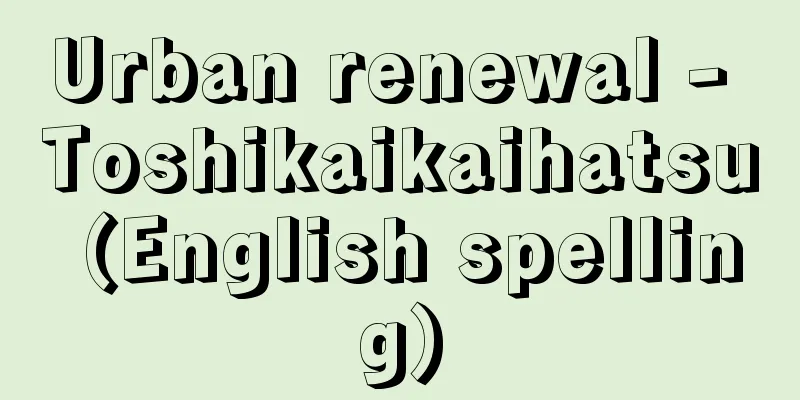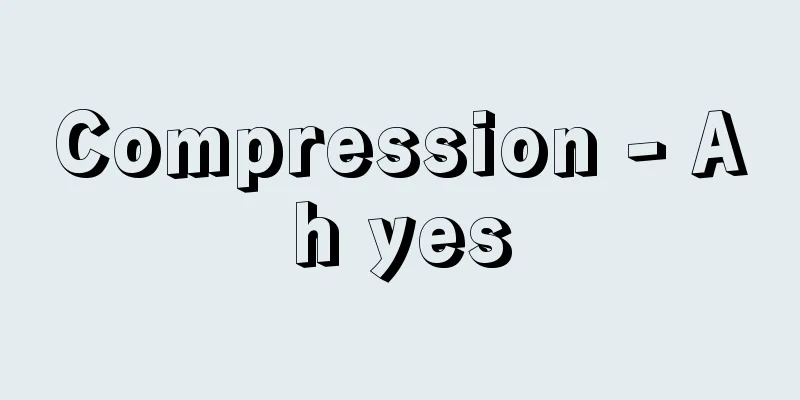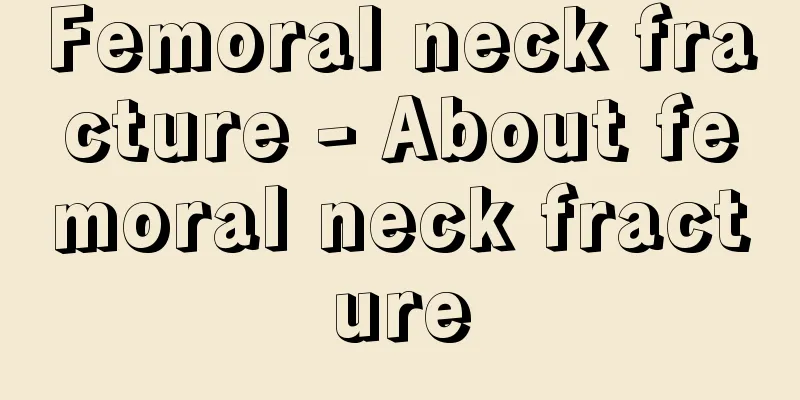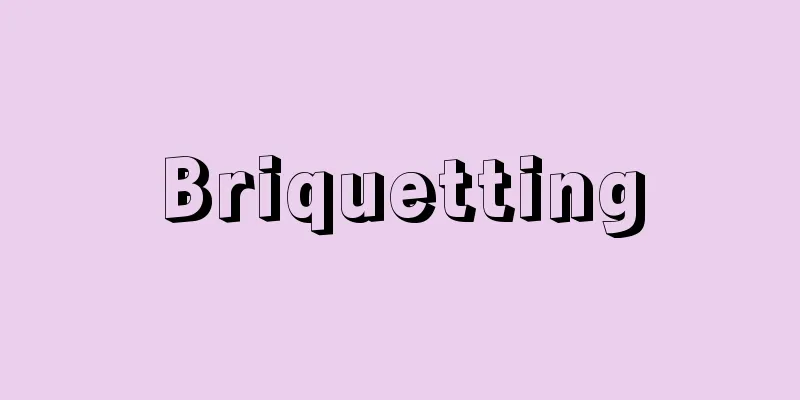Urban renewal - Toshikaikaihatsu (English spelling)

|
Urban redevelopment has two meanings, narrow and broad. In the narrow sense, it refers to the complete clearance (removal) of existing buildings and public facilities in existing urban areas where the urban environment has deteriorated severely due to the deterioration of buildings and public facilities, such as slums and slum housing areas, and the integrated development of buildings and public facilities according to the purpose of redevelopment. It is a physical urban redevelopment project based on the so-called "scrap-and-build method," and examples of this include urban redevelopment projects based on the Urban Redevelopment Act and housing district improvement projects based on the Housing District Improvement Act. In the broad sense, there is a definition given by the International Conference on Urban Renewal held in The Hague, Netherlands in 1958. According to this, urban redevelopment is given the comprehensive name "urban renewal," which means revitalizing existing urban areas with deteriorated urban environments into safe, healthy, and cultural residential environments, and includes three elements: "redevelopment," "rehabilitation," and "conservation." The first element, "redevelopment," is almost the same as redevelopment in the narrow sense. The second element, "rehabilitation," refers to improving the residential environment in existing urban areas where the urban environment is deteriorating by partially rebuilding, repairing, remodeling, and modernizing facilities. The third element, "conservation," refers to maintaining a good urban environment through building restrictions, use regulations, and green space conservation. Therefore, urban redevelopment in the broad sense includes a wide range of content that could be described as "urban planning for existing urban areas." Before the Second World War, urban redevelopment in Japan began as a land readjustment project in disaster-stricken urban areas and an improvement project for slum areas affected by the earthquake, triggered by the Great Kanto Earthquake. After the war, this was succeeded by the land readjustment project for war damage reconstruction. Then, from 1960 (Showa 35) to 1961, when postwar reconstruction had settled down and high economic growth began, urban remodeling projects, disaster prevention building block construction projects, and housing district improvement projects were established one after another, and redevelopment project methods for existing urban areas were put in place. Furthermore, as high economic growth got into full swing, the intensive use of land through the reorganization of existing urban areas became an issue, and in 1969 the Urban Redevelopment Act was enacted to make cities three-dimensional. In other words, the owners of land and buildings in the area organize a business association, or a public institution such as a local government or public corporation takes on the role of business operator, demolishing all the structures and constructing new buildings, transferring a corresponding number of floor spaces to the previous owners, and transferring or leasing the surplus floor space to tenants (lessees, shopkeepers) other than the owners, with the profits used to cover business expenses. However, contrary to the renewal of urban functions, scrap-and-build redevelopment can easily lead to the relocation of existing residents and the collapse of local communities, and as economic growth slows, it becomes more difficult to secure tenants and sell surplus floor space, making the redevelopment project itself unprofitable. These problems are gradually growing. Now that the era of high economic growth, when rapid functional transformation and advancement of cities was required, is long gone, there is a demand for redevelopment methods for a mature era that will ensure the conditions for local residents to settle down. Urban redevelopment in the narrow sense is now steadily shifting to urban redevelopment in the broad sense. [Moriaki Hirohara] "Urban Redevelopment in Europe - Tradition and Creation, A Guide to Human-Respecting Urban Development" by Kimura Mitsuhiro and Hibata Yasuo (1984, Gakugei Publishing) " "Urban Law Overview" by Yasumoto Norio (2008, Horitsu Bunkasha) "Urban Redevelopment Practical Handbook 2010" edited by the Urban Development Division of the Urban and Regional Development Bureau of the Ministry of Land, Infrastructure, Transport and Tourism (2010, Taisei Publishing) [Reference] | | |Source: Shogakukan Encyclopedia Nipponica About Encyclopedia Nipponica Information | Legend |
|
都市再開発には狭義・広義の2通りの意味がある。狭義には、建築物の老朽化や公共施設の荒廃化が進み都市環境が極度に悪化している既成市街地、たとえばスラムや不良住宅地区において既存建築物や公共施設を全面的にクリアランス(除去)し、再開発目的にしたがって建築物と公共施設などを一体的に整備することをいう。いわゆる「スクラップ・アンド・ビルド方式」に基づく物的な市街地改造事業のことであり、都市再開発法に基づく市街地再開発事業や住宅地区改良法に基づく住宅地区改良事業などがこれにあたる。 広義には、1958年にオランダのハーグで行われた都市再開発国際会議の定義がある。これによると、都市再開発は都市環境が悪化した既成市街地を安全で健康的かつ文化的な居住環境に再生させる意味の「都市更新」(アーバン・リニューアル)という包括的なネーミングが採用され、そのなかに「再開発」(リデベロップメント)、「修復」(リハビリテーション)、「保全」(コンサベーション)の三つの内容が含まれるとしている。第1番目の「再開発」は狭義の再開発とほぼ同意義である。第2番目の「修復」とは、都市環境が悪化しつつある既成市街地において、建築物の部分的な建て替えや修理修繕、改造や設備の近代化などにより居住環境を改善することである。第3番目の「保全」とは、建築制限や用途規制、緑地保全などを通して良好な都市環境を維持することである。したがって広義の都市再開発は「既成市街地を対象とした都市計画」とでもいえる幅広い内容を包含している。 日本の都市再開発は、第二次世界大戦前は関東大震災を契機とする被災市街地の土地区画整理事業および震災スラムの不良住宅地区改良事業としてスタートし、戦後は戦災復興土地区画整理事業に受け継がれた。そして戦後復興が一段落して高度経済成長が始まる1960年(昭和35)から1961年にかけて市街地改造事業、防災建築街区造成事業、住宅地区改良事業等が相次いで創設され、既成市街地における再開発事業手法が整った。さらに高度経済成長の本格化とともに既成市街地の再編による土地の高度利用が課題となり、1969年に都市の立体化を図る都市再開発法が制定された。すなわち当該地区の土地・家屋の権利者が事業組合を組織して、あるいは自治体や公団などの公的機関が事業主体となってすべての建築物を除却して新しいビルを建設し、従前の権利者に相当分の床を移転し、余剰床は権利者以外のテナント(賃借人、出店者)に譲渡もしくは賃貸してその収益を事業費にあてるという仕組みである。 しかし、スクラップ・アンド・ビルド方式の再開発は都市機能の更新とは裏腹に、ともすれば従前住民の転出をもたらし、地域コミュニティの崩壊を導きやすいこと、経済成長の鈍化とともにテナントの確保と余剰床の売却が困難となり、再開発事業そのものの採算がとれなくなっていることなど、問題がしだいに拡大しつつある。都市の激しい機能転換と高度化が求められた高度経済成長時代が遠くに去ったいま、地区住民の定住条件を確保するための成熟時代の再開発手法が求められている。狭義の都市再開発は広義の都市再開発へ、いまや確実にそのスタンスを移行させている。 [広原盛明] 『木村光宏・日端康雄著『ヨーロッパの都市再開発――伝統と創造 人間尊重のまちづくりへの手引き』(1984・学芸出版社)』▽『安本典夫著『都市法概説』(2008・法律文化社)』▽『国土交通省都市地域整備局市街地整備課監修『都市再開発実務ハンドブック2010』(2010・大成出版社)』 [参照項目] | | |出典 小学館 日本大百科全書(ニッポニカ)日本大百科全書(ニッポニカ)について 情報 | 凡例 |
Recommend
Former immigrants
…The majority of whites are descended from immigr...
MacLeod, WC (English spelling)
…There have been many conquests and attempts to c...
Emulsified asphalt
…Blown asphalt has applications as a civil engine...
Shime [town] - Shime
A town in Kasuya County, adjacent to Fukuoka City,...
Style - Buntai (English spelling) style English
A style of sentence structure. It often refers to...
Henan Tenmoku
...From the late Northern Song to the Jin dynasty...
analogia
…A word derived from the Greek word analogia, whi...
Universal Postal Union (Bankoku Yubin Rengo)
Abbreviation: UPU. One of the specialized agencie...
Sarazen, G. (English spelling) SarazenG
…Winning all four major tournaments in one year i...
River piracy
A phenomenon in which the upstream section of a ri...
Heibei Asaoka
?-? An archer from the early Edo period. He studi...
November Steps
This work for biwa, shakuhachi and orchestra by To...
Poudreuse
… Small mirrors were used as dressing mirrors, ei...
Ganjiang and Moye - Kansho Bakuya
…The story of “Casting a Sword” from Lu Xun’s “Ne...
Waray-waray (English spelling)
The Ilonggo (also called Hiligaynon; 4.2 million)...









